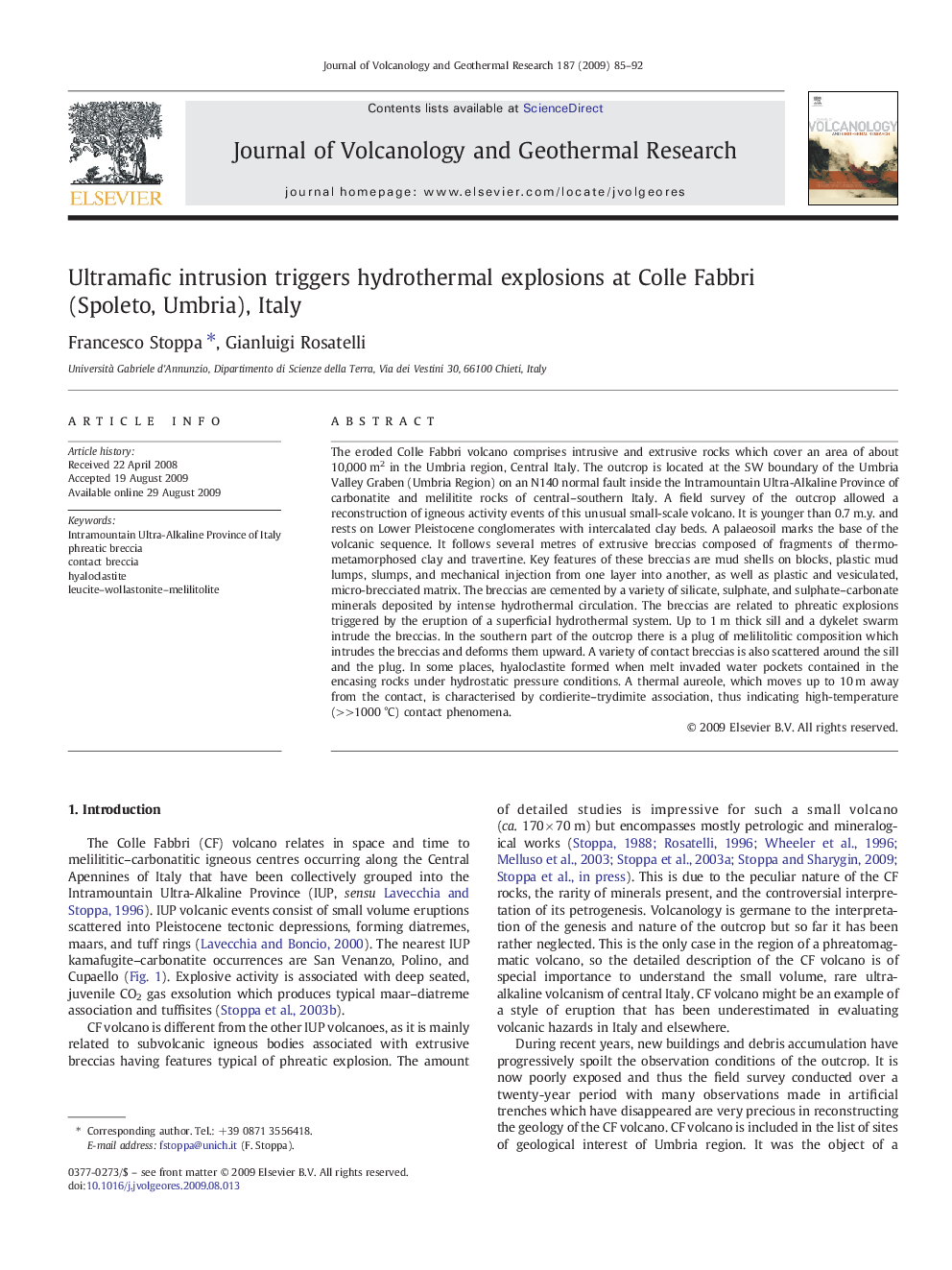| کد مقاله | کد نشریه | سال انتشار | مقاله انگلیسی | نسخه تمام متن |
|---|---|---|---|---|
| 4715200 | 1638430 | 2009 | 8 صفحه PDF | دانلود رایگان |

The eroded Colle Fabbri volcano comprises intrusive and extrusive rocks which cover an area of about 10,000 m2 in the Umbria region, Central Italy. The outcrop is located at the SW boundary of the Umbria Valley Graben (Umbria Region) on an N140 normal fault inside the Intramountain Ultra-Alkaline Province of carbonatite and melilitite rocks of central–southern Italy. A field survey of the outcrop allowed a reconstruction of igneous activity events of this unusual small-scale volcano. It is younger than 0.7 m.y. and rests on Lower Pleistocene conglomerates with intercalated clay beds. A palaeosoil marks the base of the volcanic sequence. It follows several metres of extrusive breccias composed of fragments of thermometamorphosed clay and travertine. Key features of these breccias are mud shells on blocks, plastic mud lumps, slumps, and mechanical injection from one layer into another, as well as plastic and vesiculated, micro-brecciated matrix. The breccias are cemented by a variety of silicate, sulphate, and sulphate–carbonate minerals deposited by intense hydrothermal circulation. The breccias are related to phreatic explosions triggered by the eruption of a superficial hydrothermal system. Up to 1 m thick sill and a dykelet swarm intrude the breccias. In the southern part of the outcrop there is a plug of melilitolitic composition which intrudes the breccias and deforms them upward. A variety of contact breccias is also scattered around the sill and the plug. In some places, hyaloclastite formed when melt invaded water pockets contained in the encasing rocks under hydrostatic pressure conditions. A thermal aureole, which moves up to 10 m away from the contact, is characterised by cordierite–trydimite association, thus indicating high-temperature (>>1000 °C) contact phenomena.
Journal: Journal of Volcanology and Geothermal Research - Volume 187, Issues 1–2, 30 October 2009, Pages 85–92